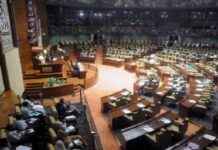Pakistan’s Gender Pay Gap: A Closer Look at Key Statistics and Analysis
In a recent report by the International Labour Organisation (ILO), Pakistan’s gender pay gap (GPG) has come under scrutiny, shedding light on the stark disparity between men and women in the country’s workforce.
The report reveals that Pakistan currently faces a significant GPG of 25%, meaning that women earn only Rs750 for every Rs1,000 earned by their male counterparts. This places Pakistan among the countries with the highest GPG globally, indicating a pressing issue that demands attention and action.
Understanding the Statistics
When breaking down the numbers, the report shows that the 25% GPG is based on hourly wages. However, when looking at monthly wages, the gap widens to around 30%, partially due to women working fewer hours on average. This stark contrast in earnings highlights a systemic issue that goes beyond mere differences in work hours or job roles.
Moreover, the report emphasizes that a significant portion of this wage gap cannot be explained by factors such as education, age, or skills level. This suggests that there may be underlying discrimination in the labor market that contributes to the unequal pay between men and women.
In comparison to other South Asian countries, Pakistan’s GPG stands out as notably higher. For instance, Sri Lanka reports a 22% GPG based on hourly wages, Nepal stands at 18%, and Bangladesh even shows a negative gap of -5%. These statistics place Pakistan at the forefront of gender wage disparity in the region.
Progress and Challenges
While there has been a slight decrease in Pakistan’s GPG over the years, with the figure dropping from 33% in 2018 to 25% currently, there is still much work to be done. The gender pay gap remains more pronounced in the informal and household sectors, where disparities exceed 40%, highlighting the need for targeted interventions and policy changes in these areas.
The report also indicates that in the formal economy, where compliance with labor laws is more stringent, the GPG is almost negligible. This suggests that enforcing existing regulations and ensuring equal pay for equal work can help narrow the gap and promote gender equality in the workplace.
Despite international conventions like the ILO’s Equal Remuneration Convention (1951) advocating for equal pay, the persistence of the gender pay gap underscores the ongoing inequality between men and women in the labor force. Addressing this issue requires a multifaceted approach that involves not only legislative changes but also shifts in societal norms and attitudes towards gender equality.
As Pakistan grapples with the challenges of closing the gender pay gap, it is crucial for policymakers, employers, and civil society to work together to create a more equitable and inclusive workforce. Only through collective efforts and a commitment to gender equality can we hope to bridge the divide and ensure fair treatment and compensation for all employees, regardless of gender.









